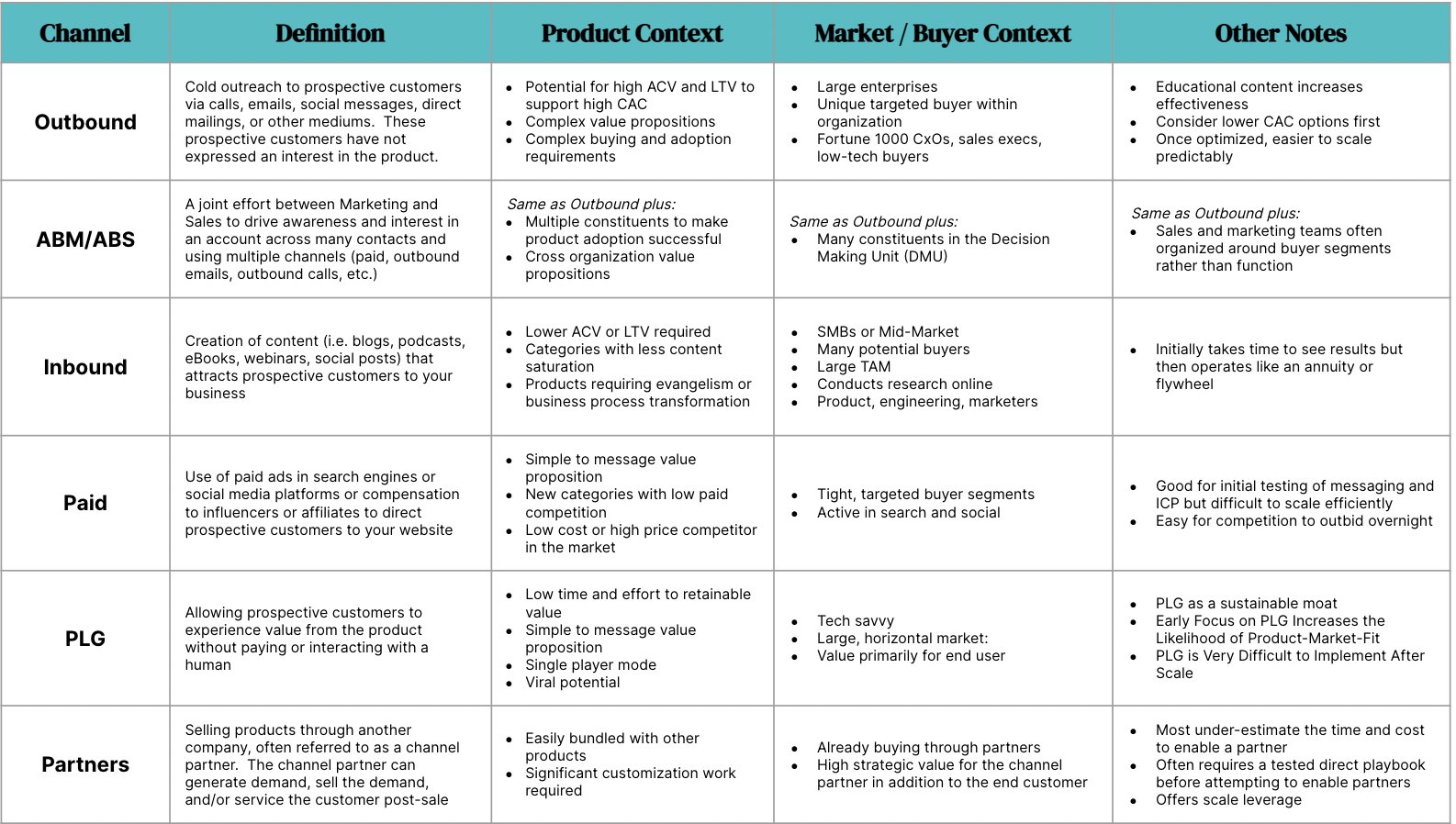Demand Generation Channels
Mark Roberge (Stage 2 Capital) provides a comprehensive overview of the most common Demand Generation Channels you can choose from as a startup. Let’s dive in.
Source: Mark Roberge, Stage 2 Capital
What is Demand Generation?
True marketing enthusiasts will recognize that Demand Generation is often a combination of three of the traditional marketing 4Ps: Communication, Distribution, and Product. Demand Generation is a fancy term, frequently employed in B2B tech startups, to talk about activities aimed at generating demand (i.e., leads, visitors, potential clients who 'raise their hands') higher up in the funnel. These leads can be easily nurtured or captured by marketing and sales. Demand Generation usually means for the CEO, CFO, etc. quantifiable marketing activities that have a positive impact on pipeline generation (B2B) or customer acquisition (B2C). In my experience, true long term brand building (via mass advertising for example) is not really what people mean by Demand Generation. Though it generates demand.
Are there other demand generation channels?
These 6 groups cover dozens of small tactics. It’s good start. But some tactics could be distinct channels/groups as they are frequently used as the sole demand generation channel for many startups.
PR
Press Relations – a subset of communications – fits well in the Paid bucket. But in my experience, is a channel in itself that requires a very different toolset and mindset than running ads on Facebook or SEM campaigns on Google. PR is particularly important when you prospective clients all read the same industry media or are influenced by thought leaders on podcasts, blogs, magazines, events. You’d want to use good PR to be mentioned there. PR then fuel Inbound and helps with SEO; and complements Outbound, AMB & Partner channels.
Events
Digital events (webinars), in-person, and digital events that you sponsor or attend yourself (trade shows, conferences), or ones that you create (summits, training), are all paid channels. Events deserve a category, in my opinion, because they require a lot of resources, and it's not just a tactic you add—you need to go all in on this channel. You're going to hit the road and do trade shows (and network a lot) or start hosting a weekly/monthly webinar, etc. It's all just lead generation through networking, and it leads to inbound, but it's good to see it as a channel on its own.
Social/Community
Here, I agree with the article. Social/community is just Inbound. By creating content or fostering a community, you stay top of mind, position yourself as an expert, so people to reach out to you when they are in the market for your products/services.
Personal network
The #1 channel for most B2B startups, personal network is really just Outbound. Finding early customers through former colleagues and early employee connections is extremely effective when you know the space well and already have credibility. It goes a long way–but it has limits as you scale.
How to pick the best channels?
If you are a startup, choose carefully, 1-2 channel should be more suite for your industry/type of client/sales cycle/budget.
The main filter is: where are your clients when they are in a consideration or buying mood for your category of products? Also: how are they seeking information–and are they seeking information at all? For complex B2B software, procurement will seek the best solutions. For low-involvment B2C products, people won’t be looking for solutions, you’ll have to interupt them in their routine.
Pick channels that reinforce your strengths and tactics that fit your style. You love to write online? Consider Inbound. You love to talk & network? Consider Outbound. You are an ex-digital ads guru? Consider Paid.
Voilà.
‘Choose wisely, for while the true Grail will bring you life, the false Grail will take it from you.’
Demand Generation Ressources
Why Every Startup Needs an Inverted Demand Generation Funnel (Dave Kellogg)
What's the ideal structure of a B2B demand gen team? (RightPercent)
Using Data to Build a Demand Generation Engine (Shiv Narayanan)
For Inbound: Content-led SEO (DemandCurve)


